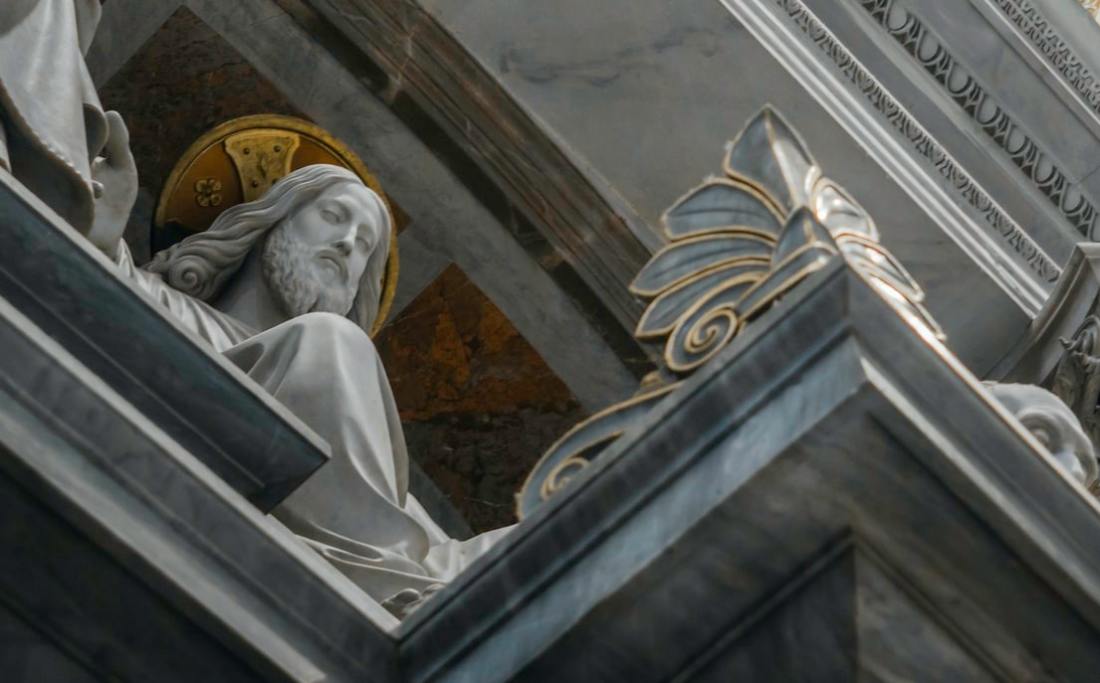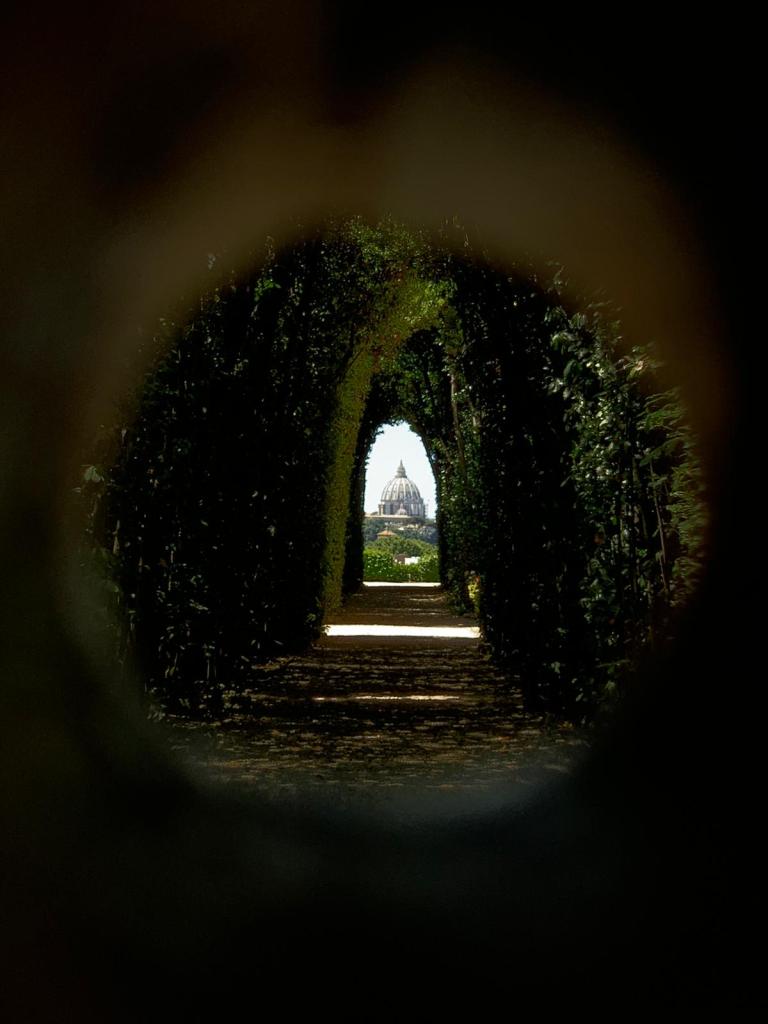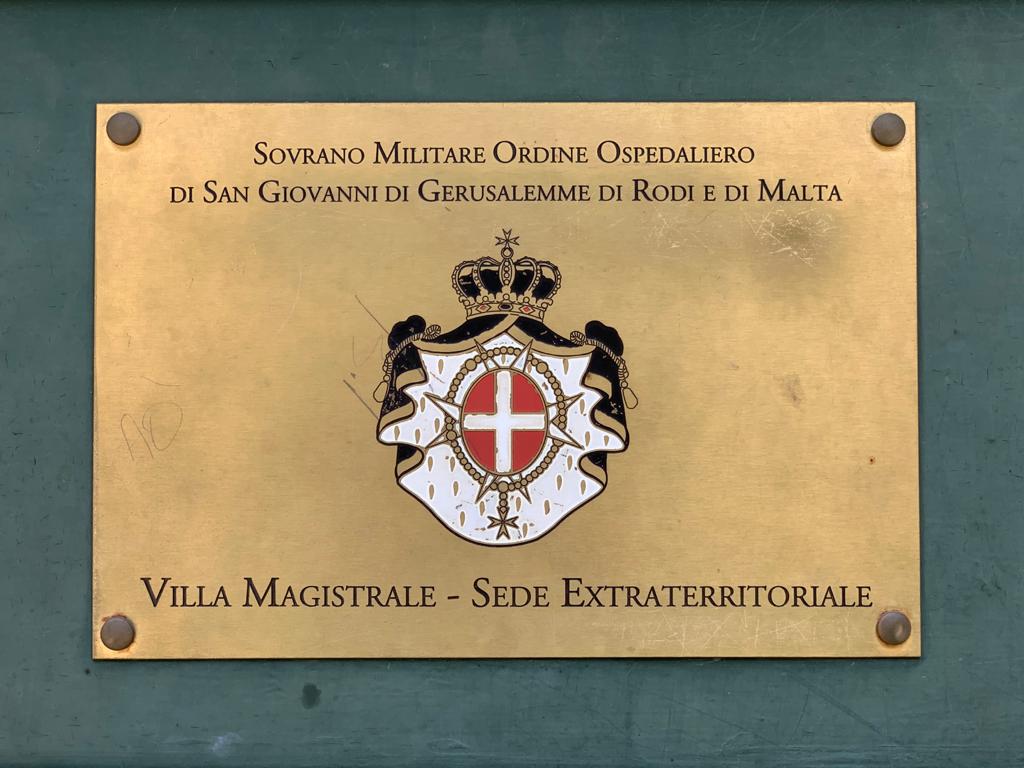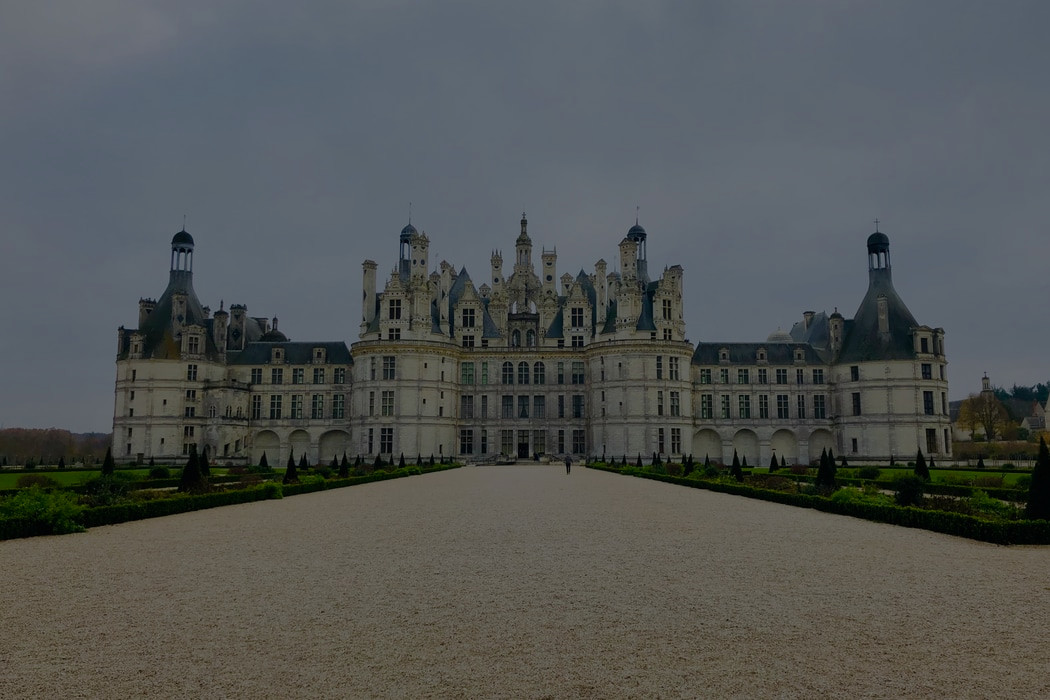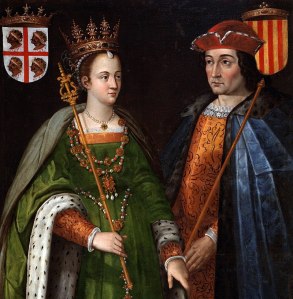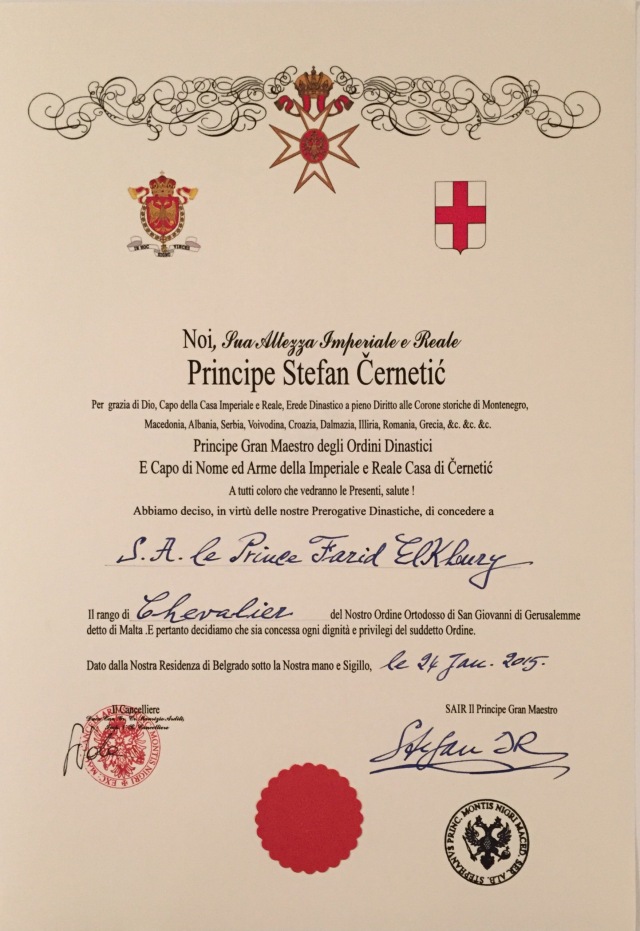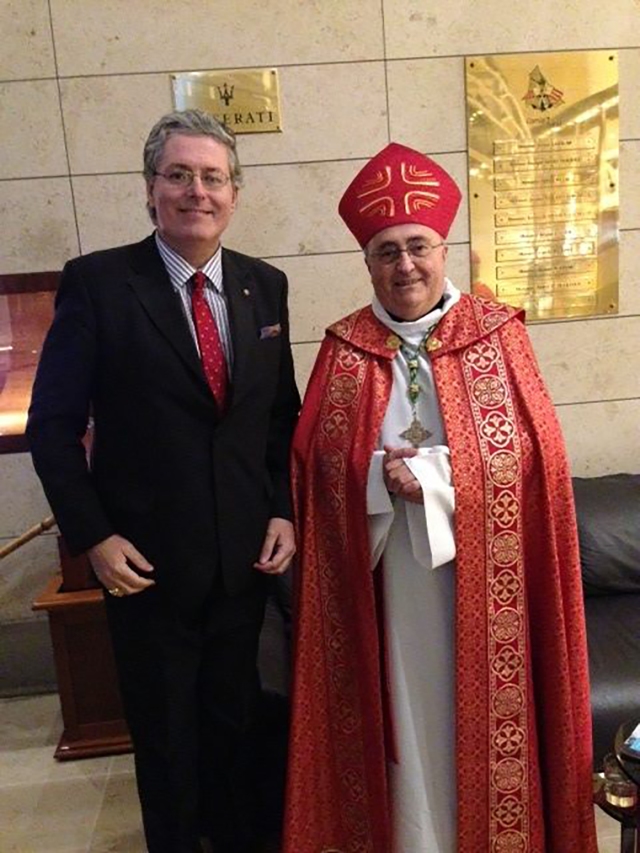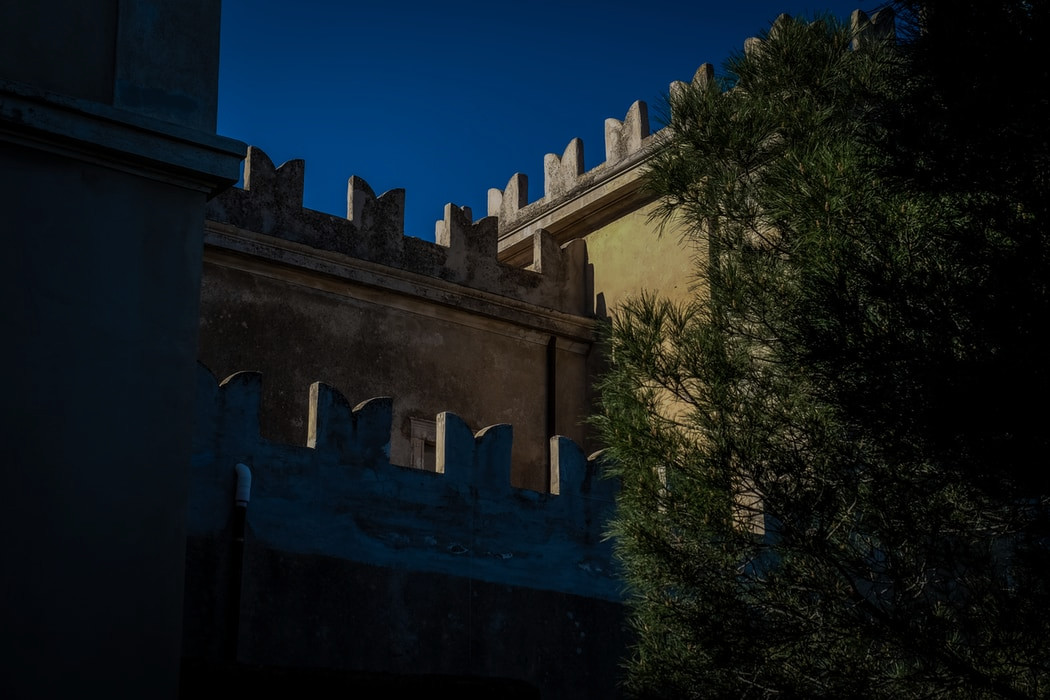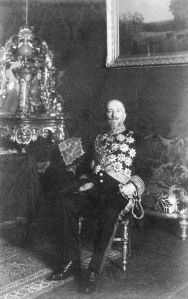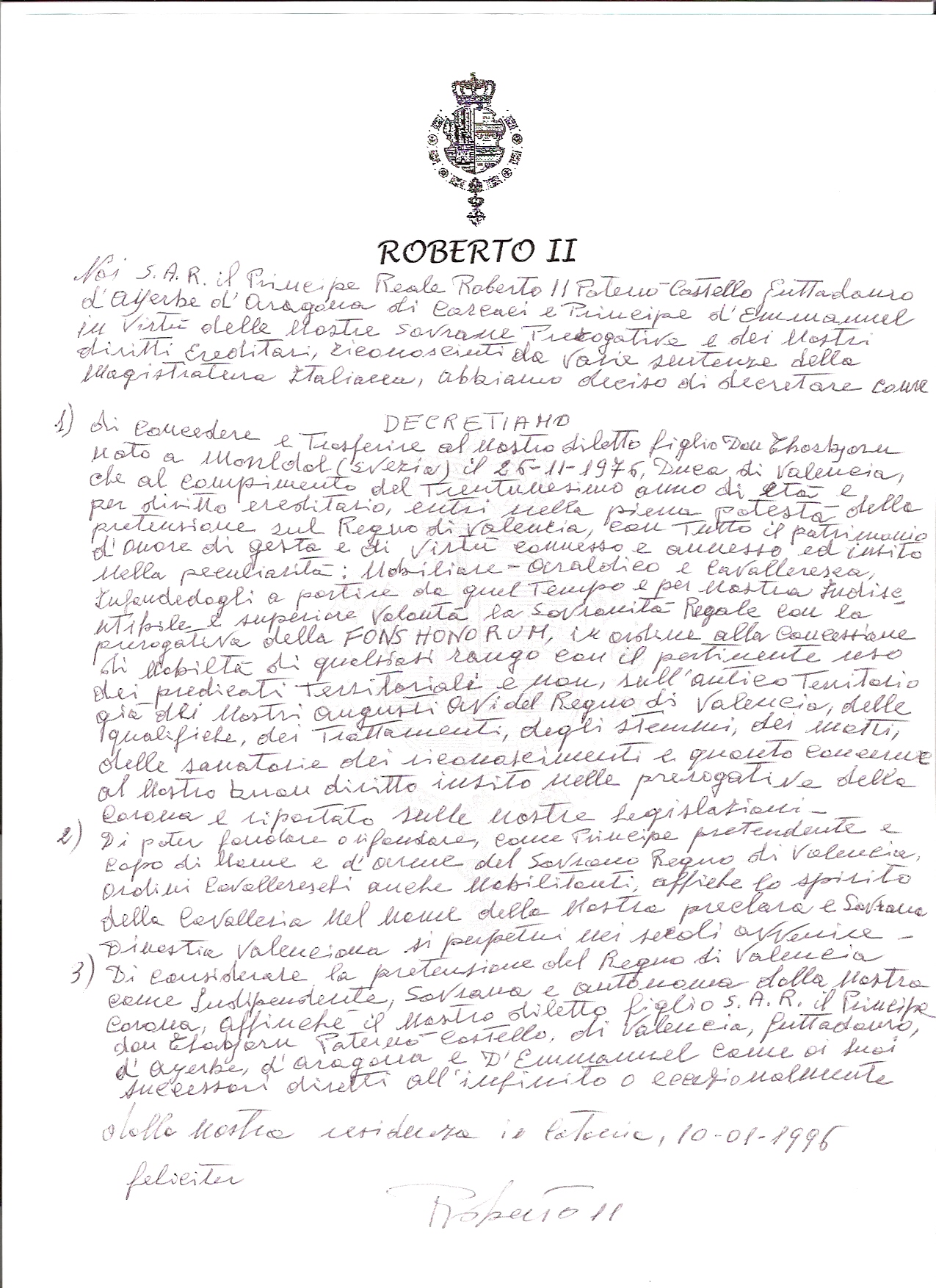A fons honorum (English: source of honour) can be defined as the legitimate and legal authority of a person or institution to grant titles and awards to other parties (see e.g.: Versélewel de Witt Hamer, 2017, p. 100).
In earlier articles, I examined the fons honorum of certain historical dynasties, like the former monarchs of Georgia, Rwanda and Hawaii. This article investigates, from a legal perspective, the fons honorum of religious organizations to grant titles and awards. I will demonstrate that this fons honorum is based on religious freedom and the freedom of association. Although international law does not define religion, it does identify religion with conscience, and enumerates a number of manifestations of religion that are to be protected.
The freedom of religious manifestation
European legal perspective
Article 9 of the European Convention on Human Rights (ECHR), guarantees the freedom of thought, conscience and religion in relation to the State. From a European law perspective, there are three aspects to the aforementioned freedoms: internal, external and collective aspects.
- Regarding the internal aspect, the aforementioned freedom is absolute. This freedom concerns deeply held ideas and convictions that are forged in a person’s individual conscience and therefore cannot in themselves prejudice public order. Therefore, these ideas and convictions cannot be subject to restrictions by State authorities.
- With regard to the external aspect, the freedom is not absolute but relative. This freedom to manifest a person’s beliefs is limited, because it can affect or even threaten a country’s public order. While religious freedom is primarily a matter of individual conscience, it also implies, inter alia, freedom to “manifest [one’s] religion” alone and in private or in community with others, in public and within the circle of those whose faith one shares. Article 9 lists a number of forms which manifestation of one’s religion or belief may take, namely worship, teaching, practice and observance (European Court of Human Rights (ECtHR), Metropolitan Church of Bessarabia and Others v Moldova, judgment of 13 December 2001, ECHR Reports 2001-XII, § 114 et seq. and case-law cited).
- Most of the rights recognised under Article 9 are individual rights that cannot be challenged. However, some of these rights may have a collective aspect. Accordingly, the ECtHR has recognised that a Church or ecclesiastical body may, as such, exercise on behalf of its members the rights guaranteed by Article 9 of the Convention (ECtHR, 12 June 2014, Martinez Fernandez v. Spain, Comm. 1104/2002, U.N. Doc. A/60/40, Vol. II, at 150 (HRC 2005).
Freedom of conscience and of religion does not protect each and every act or form of behaviour, motivated or inspired by a religion or a belief. In other words, Article 9 of the ECHR protects a person’s private sphere of conscience, but not always any public conduct inspired by that conscience. It does not allow general laws to be broken (Pichon and Sajous v. France (dec.), no. 49853/99, ECtHR 2001-X).
As religious communities traditionally and universally exist in the form of organized structures, Article 9 ECHR has to be interpreted in the light of Article 11 ECHR which safeguards associative life against unjustified state interference. Seen in this perspective, the believer’s right to freedom of religion includes the right of a religious community to function peacefully; free from arbitrary State intervention. This autonomous existence of religious communities is indispensable
for pluralism in a democratic society and is thus an issue at the very heart of the protection which Article 9 affords (Hasan and Chaush v. Bulgaria [GC], no. 30985/96, § 62, ECtHR 2000-XI; Metropolitan Church of Bessarabia and Others, cited above, § 118; and Holy Synod of the Bulgarian Orthodox
Church (Metropolitan Inokentiy) and Others v. Bulgaria, nrs. 412/03 and 35677/04, § 103, 22 January 2009).
There exist a vast number of cases where the ECtHR decided regarding the wearing of religious clothing and the use of symbols. Under Article 9(2) ECHR, the right to freely manifest one’s religion can only be restricted under certain cumulative conditions. These restrictions must (i) be prescribed by law; (ii) be necessary in a democratic society by fulfilling a pressing social need; (iii) have a legitimate aim (these aims are mentioned in Article 9(2) ECHR); and, (iv) the means used to achieve that aim must be proportionate and necessary. The right not to be discriminated against can, according to the ECHR, also be restricted under certain circumstances, where a similar justification test is applied. In addition, article 51(2) Charter of Fundamental Rights of the European Union (EUCFR), is a similar test that also applies to restrictions on the rights in Articles 10 and 21 EUCFR. The bans on the wearing of religious clothing or symbols are justified under Article 9(2) ECHR.
Global legal perspective
The freedom of religion or belief is also guaranteed by article 18 of the (mondial) Universal Declaration of Human Rights, article 18 of the International Covenant on Civil and Political Rights and the Declaration on the Elimination of All Forms of Intolerance and of Discrimination Based on Religion or Belief. Regarding the use of religious expressions, the United Nations issued the following statements:
Art. 6 (c): The right to freedom of thought, conscience, religion or belief includes the freedom, “To make, acquire and use to an adequate extent the necessary articles and materials related to the rites or customs of a religion or belief;”.
Declaration on the Elimination of All Forms of Intolerance and of Discrimination Based on Religion or Belief, Proclaimed by United Nations General Assembly resolution 36/55 of 25 November 1981
4 (b): The Commission on Human Rights urges States, “To exert the utmost efforts, in accordance with their national legislation and in conformity with international human rights law, to ensure that religious places, sites, shrines and religious expressions are fully respected and protected and to take additional measures in cases where they are vulnerable to desecration or destruction;”.
UN Commission on Human Rights, Resolution 2005/40 on Elimination of All Forms of Intolerance and of Discrimination Based on Religion or Belief, 19 April 2005
Para. 4: “The concept of worship extends to […] the display of symbols”.
Office of the United Nations High Commissioner for Human Rights, General Comment No. 22: The right to freedom of thought, conscience and religion (Art. 18): 30/07/93, CCPR/C/21/Rev.1/Add.4, General Comment No. 22. (General Comments), 1996-2001.
Para. 4: “The observance and practice of religion or belief may include not only ceremonial acts but also such customs as […] the wearing of distinctive clothing or head coverings […].”
The aforementioned legal frameworks show that religious freedom and the liberty to manifest this freedom by symbols is a fundamental human right and protected by international law, that is incorporated by states in national law. In my opinion, religious freedom also includes the freedom to grant titles and awards when issued in the context of religious customs, symbols and honorifics. Therefore, the fundamental human rights of religious freedom combined with the freedom of association are the source of authority of religious groups for legally and legitimately granting such titles and awards.
Case studies
Roman Catholic Church

At the age of 14, the famous composer Wolfgang Amadeus Mozart (1756-1791) left Salzburg to go on tours to Italy, accompanied by his father, the musician Leopold Mozart (1719-1787). Their principal destinations were Verona, Mantua, Cremona, Milan, Parma, Bologna, Florence and finally Rome, which he reached on 10 April 1770. When Pope Clement XIV was informed of the child prodigy, he received Mozart and his father in a private audience on their return from Naples two months later, on 4 July 1770. On that occasion, the Pope conferred the Order of the Golden Spur on young Mozart (Jahn, 1856, pp. 199-205; Cardinale 1983, pp. 35-42), thus making him a Papal Knight of the Golden Spur. The following day, Mozart received his official insignia, consisting of ‘a golden cross on a red sash, sword, and spurs,’ emblematic of honorary knighthood. In 1777, Mozart had his portrait painted with the star-encircled cross of the order on his coat.
The papal patent of 4 July 1770 for the award stated:
Inasmuch as it behoves the beneficence of the Roman Pontiff and the Apostolic See that those who have shown them no small signs of faith and devotion and are graced with the merits of probity and virtue, shall be decorated with the honours and favors of the Roman Pontiff and the said See.’
Vatican secret archives 2009, p. 183
It is interesting to examine the capacity in which the pope issued the diploma. Roman Pontiff refers to the Bishop of Rome, the Pope. An apostolic see is an episcopal see (a bishop’s ecclesiastical jurisdiction) of which the foundation is attributed to one or more of the apostles of Jesus or to one of their close associates. In Roman Catholicism, the apostolic see refers to the See of Rome. Therefore, both references to the fons honorum are of a religious nature. Although the Papal States on the Italian Peninsula were under the direct sovereign rule of the pope at that time, the fons honorum for the diploma is based on religion, instead of public law. It has an internal character within the church structures.
Currently, the Pontifical Orders of Knighthood are secular orders of merit of which the membership is conferred by a direct decision of the Pontiff. The diplomas given to recipients of the most popular Pontifical Orders, the Pontifical Equestrian Order of Saint Sylvester Pope and Martyr (reorganised by Pope Pius X on his own initiative, motu proprio, “Multum ad excitandos” on 7 February 1905), and the Pontifical Equestrian Order of Saint Gregory the Great (established on 1 September 1831, by Pope Gregory XVI), are issued in the capacity of pontifex maximus. Although this designation has been used in inscriptions referring to the Popes for some centuries, it has never been included in the official list of papal titles, which is published yearly in the Annuario Pontificio. The official list of titles of the Pope given in the Annuario Pontificio mentions “Supreme Pontiff of the whole Church” (in Latin, Summus Pontifex Ecclesiae Universalis) as the fourth title, the first being “Bishop of Rome“. The title pontifex maximus appears in inscriptions on religious buildings and on coins and medals. Awards are gazetted in Acta Apostolica Sedis, the Gazette of the Holy See. Diplomas of appointment are issued by the Secretariat of State. Papal knighthoods are personal. Perpetual succession is no longer granted.
The Order of Saint Sylvester is intended to honour Roman Catholic lay people who are actively involved in the life of the church, particularly as it is exemplified in the exercise of their professional duties and mastership of the different arts. According to Pope Gregory XVI’s Papal Brief of 1 September 1831, the Order of Saint Gregory is an order of merit to be bestowed on gentlemen of proven loyalty to the Holy See who, by reason of their nobility of birth and the renown of their deeds or the degree of their munificence, are deemed worthy to be honoured by a public expression of esteem by the Holy See (see: appendix 1, underlined sentence).
Clearly, the orders of knighthood focus on religious merit and are issued in a religious capacity. I have not seen an explicit reference to the capacity of the pope as sovereign of the Vatican State. The latter capacity is referred to as the temporal power of the church: the rule of the Church in earthly possessions and the authority of the Pope over civil territories belonging to the Church, as in the former Papal States. This power is an addition to his dominion in spiritual matters and becomes necessary if freedom from civil power is to be assured. The church’s temporal power is presently exercised in relation to the Vatican City State since the Lateran Treaty of 1929. The term may also refer to the exercise of political influence by the bishops formerly through landed estates and currently through financial and other means. The aforementioned orders of knighthood are not issued as part of the Vatican’s temporal power; they are awards, issued for religious merit and therefore have a religious nature.
Considering the foregoing, from both a historical and a legal perspective, for centuries, Popes have exercised their religious fons honorum to grant titles and awards. These awards have an internal effect. They are part of the religious structure of the Roman Catholic faith and are logically recognised as such by the Vatican City State. Other states may choose to either allow their citizens to wear them or to forbid them. The latter could be in breach of religious freedom, as guaranteed by international law.
Abbey-Principality of San Luigi
Since 1970, the Catholic population has nearly doubled, growing from about 650 million in 1970 to about 1.3 billion in 2020. The Church has circa 415.000 priests. As the world’s oldest and largest continuously functioning international institution, it has played a prominent role in the history and development of Western civilization. It is interesting to compare this huge organization to a small religious group, like for example the Abbey-Principality of San Luigi, based in the United Kingdom.
The history of the Abbey-Principality, is described on its webpage:
The Abbey-Principality of San Luigi is an international Christian religious organization, originally founded in 1883 as a sovereign theocratic principality in the Fezzan. Within an overall humane and charitable ethos, the Abbey-Principality carries out its mission today through churches, religious orders, nobiliary, chivalric and scholarly institutions.
The Abbey-Principality is a church in its own right, led by the Prince-Abbot who is its Archbishop. In the spirit of ecumenism, it has over the years also absorbed other churches and religious orders leading to an international ministerial outreach, which are organized under the federation of the Catholicate of the West.
Background
The name of the Abbey-Principality commemorates St Louis, King of France (1214-70), and continues several medieval traditions connected with the Knights Templar and the Crown of Thorns. It was established by a group of Catholic Benedictine monks as a self-governing sovereign religious principality in the Fezzan in 1883 and ruled there for eleven months. In 1884, the Abbey was overthrown and the Prince-Abbot murdered. The remaining monks came to the Bunyoro-Kitara Kingdom (today part of Uganda) where the Abbey-Principality was re-established and the new Prince-Abbot was granted the additional chiefly title of Mukungu (Prince-Governor). After the end of this second establishment in 1888, the title of Prince-Abbot passed to successors in France and the United States.
The designation Abbey-Principality, once prevalent within the Roman Catholic Church along with that of prince-bishop, reflects the fact that in the Fezzan, the Prince-Abbot exercised temporal power as a sovereign prince over its abbey and surrounding area. Today, having been exiled from its former lands (which were subsequently incorporated into present-day Libya), the Abbey-Principality no longer has responsibility for territorial governance, but continues to hold the jus honorum deriving from its former sovereign status as well as preserving for its head the rank of a Prince of the Church.
On 22 March 1962, the then-Prince de San Luigi was the recipient of Letters Patent issued by His late Majesty King Peter II of Yugoslavia. The King’s act recognized the status of the Prince de San Luigi and further appointed the Prince to the ranks of the Royal Yugoslav nobility. The King had in 1960 accepted the High Protectorship of the senior chivalric Order of the Abbey-Principality, the Order of the Crown of Thorns.
(…)
Source: Website of The Abbey-Principality of San Luigi, and the Catholicate of the West.
The Abbey-Principality awards decorations, in the tradition of Archbishop Joseph René Vilatte (1854 – 1929). Vilatte, also religiously known as Mar Timotheus I, was a French–American Christian leader active in the United States and in France. He was associated with several Christian denominations before his ordination as a priest by a Christian Catholic Church of Switzerland (CKS) bishop at the request of a Protestant Episcopal Church in the United States of America (PECUSA) bishop for service in a PECUSA diocese. Vilatte’s orders include the Order of the Crown of Thorns (OCT) and the Order of the Lion and the Black Cross (OLBC).
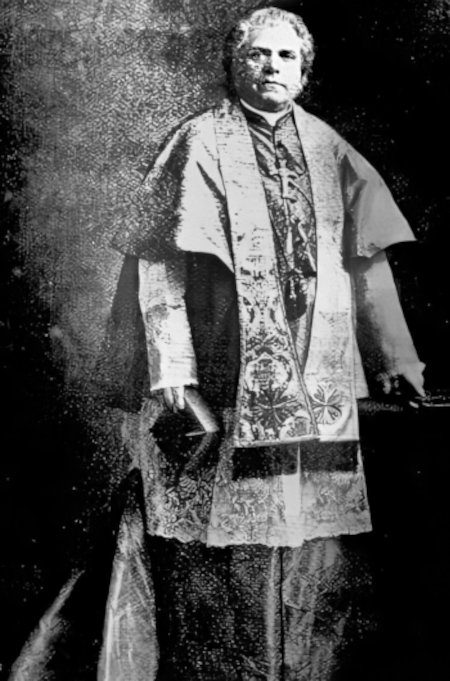
Vilatte led a hectic religious life. His dealings with the local Roman Catholic and Episcopal churches are well-documented and detailed in many biographies. His conviction and his challenge to the establishment attracted many followers, who were estranged from the established churches. Most Independent Catholic and Old Catholic bishops in the United States trace at least one of their lines of Apostolic Succession through Archbishop Vilatte. His spiritual successors carry on his work in a variety of ministries which serve especially those disenfranchised from their original church. Vilatte was a principal founder of Independent Catholicism.
For over 70 years Vilatte has often been caricatured as a charlatan and religious opportunist. However, modern scientific research by theologist Dr. Alexis Tancibok shows that, based on the discovery of new historical documents, a reevaluation of Vilatte’s reputation is justified. These documents show that – contrary to the traditional narratives – Vilatte was above all a missionary, and a campaigner for his vision of Catholic orthodoxy. In line with other Old Catholics, Vilatte believed that Rome was an advocate for Catholic unity, and that Rome’s centralized ecclesial model blocked Christian liberty, and hindered missions. Rome’s centralization was largely the product of the First Vatican Council (1870) objectors to which formed the Old Catholic movement of which Vilatte would be such a prominent part. The pre-1870 model of the Church is centred upon the bishop as the principal authority, whereas after 1870, that authority was subordinate to a much greater centralized dogma and bureaucracy.
Under the influence of the famous French preacher Hyacinthe Loyson (1827-1912), Vilatte initially believed that Anglo-Catholics could work together with the Old Catholics in the new mission field of America. After 1889, however, Dutch Old Catholics convinced Vilatte to break his relations with the Episcopalians in Wisconsin. This not only forced Vilatte to clarify the differences between Old Catholicism, Roman Catholicism and Anglicanism, but it resulted in the Syrian Orthodox Patriarch authorising his consecration as a missionary metropolitan in Colombo, Ceylon. In 1892, he changed his mission to a national Independent Catholic movement in the United States (source: early Independent Catholicism in Context: A re-examination of the career of Archbishop Joseph René Vilatte (1884-1929)). From the wording of his consecration certificate, he was consecrated there as Metropolitan of the Old Catholics in the United States. That was an integral and initial part of his episcopate and not a later addition. He was never intended to be a bishop in Ceylon or an ordinary bishop of the Syrian patriarchate.
In his 2020 thesis, Tancibok describes some challenges Vilatte faced as a missionary, because he was unsupported by traditional institutions. Tancibok’s thesis examines Vilatte’s view of Christian reunion, which he believed could only happen through Catholic unity, led by the universal episcopate rather than one church or individual. The most puzzling aspect of Vilatte’s career was his relationship with the Roman Catholic Church. On three occasions he negotiated reconciliation, but the available evidence shows that on all three occasions he did not abandon his belief in Catholic reform, nor did he intend to not function as a missionary (source: early Independent Catholicism in Context: A re-examination of the career of Archbishop Joseph René Vilatte (1884-1929)).
These new insights show that Vilatte was a renowned preacher, an inspiring leader, and published books and papers on the subjects of theology, liturgy and church history. Based on his teachings, the Abbey-Principality issues Orders to worthy individuals, of which The Chivalrous and Religious Order of the Crown of Thorns or L’Ordre Souverain, Chevaleresque, Nobilaire et Religieux de la Couronne d’Epines and The Sovereign, Knightly and Noble Order of the Lion and the Black Cross or L’Ordre Souverain, Chevaleresque, et Noble du Lion et de Croix Noire, are the most prominent.
According to its statutes, the Order of the Crown of Thorns, is religiously focussed:
The chief Aims of the Order are: (1) to defend the Christian Ideology, Tradition and Cultural Inheritance; (2) to preserve the best ideals of Knighthood of past centuries and the noble spiritual virtues of the Knights Templar; and (3) to help forward any charitable works under the Patronage of the Order.
The Order also has the aim of rewarding persons who have distinguished themselves in defence of the Church, of humanity, or in philanthropic work initiated by the Order and have shown a Christian spirit, a clean life and a noble example. The Order seeks to encourage in its members a spirit of active Christian charity and service.
Source: Statutes of Order of the Crown of Thorns.
The Order of the Lion and the Black Cross is focussed on merit and charity (statutes sub 6 and 7):
The chief Aims of the Order are (1) to unite together those who accept the ancient standards of Chivalry; (2) to help forward any charitable works under the Patronage of the Order; (3) to reward those who have distinguished themselves in the service of mankind or of the San Luigi Orders, without distinction as to race or creed.
The Order seeks to encourage in its members a spirit of active charity and service. In contrast to the Order of the Crown of Thorns, which is open to Christians only, it is open to members of all religions as well as those who do not profess any religious belief.
Source: Statutes of the Order of the Lion and the Black Cross.
Both orders are at least 130 years old and well-documented. Therefore, they have a respectable history and tradition. Although criticised by some individuals, mostly regarding their foundation narratives, both orders can legitimately claim a historical background in the context of the development of the Independent Catholic churches. The church’s titles, awards and other religious elements do not enjoy state recognition and bestow no privileges, but they remain nonetheless monuments of the church’s history and part of its religious and cultural heritage. Branding them as ‘self-styled’ is a form of religious intolerance. Therefore, the Prince-Abbot processes the legitimate and legal fons honorum to issue religiously-inspired honours. This fons honorum is protected by the freedoms of religion and association, embedded in national and international law.
Royal Brotherhood of Sao Teotonio
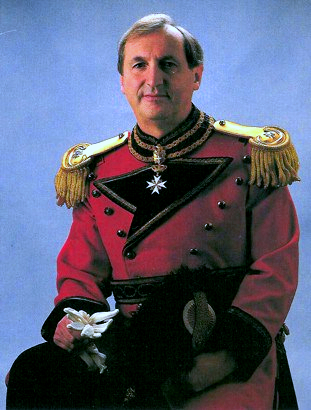
Another religious organization that issues chivalric-like awards, is the Royal Confraternity of Saint Teotonio (RCST). This group was formed in Portugal on 2 November 2000, under the Royal Protection of Dom Miguel de Bragança, Duke of Viseu, Infante of Portugal (Versélewel de Witt Hamer, 2017, pp. 86-87). Dom Miguel (1946) is a member of the Portuguese Royal Family. He is the second child of Duarte Nuno (1907-1976), Duke of Braganza, and Princess Maria Francisca of Orléans-Braganza (1914-1968). Dom Miguel is fourth in the line of succession to the former Portuguese throne, behind his elder brother, Dom Duarte Pio, Duke of Braganza, and his three children. He is a noted patron of the arts and painter. Dom Miguel is the founder and sponsor of the Annual Luso-Brazilian Week of Aldravist Art, held in Portugal and in Brazil. He is also an active member in various orders of chivalry, notably the Sovereign Military Order of Malta and the Sacred Military Constantinian Order of Saint George.
From a legal perspective, the RCST is a secular association of the Christian faithful (Latin: consociationes christifidelium); a group of baptized persons, clerics and laity, who, according to Cann. 313-319 of the 1983 Code of Canon Law, jointly foster a more perfect life and promote public worship and Christian teaching. The RCST focusses in particular on maintaining and honouring the Portuguese saint Theotonius of Coimbra (c. 1082 – 1162).
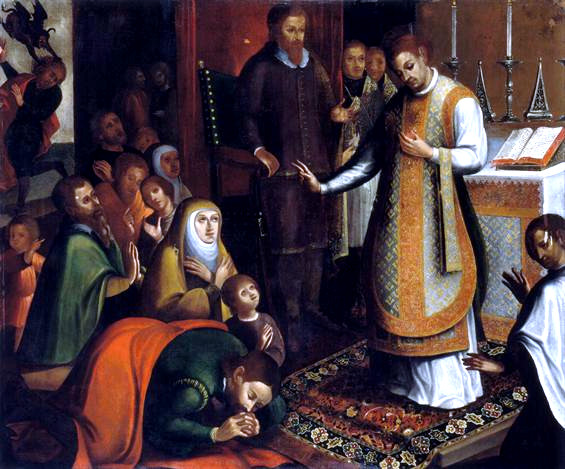
Theotonius was the nephew of the Bishop of Coimbra in Portugal and educated at the University of Coimbra. He became a parish priest and was assigned to work in Viseu, Portugal. Theotonius was a trusted advisor of Portugal’s first king, Afonso Henriques (ruled 1139-85). The king attributed his success at the Battle of Ourique to the prayers of Theotonius, who was thus able to persuade the king to release Mozarabic Christians captured during forays into land held by the Moors.
Theotonius had a great devotion to the poor, and to souls in purgatory. Each Friday, he combined these devotions by singing a Solemn Mass for the dead, leading a large procession to the cemetery to pray for the local dead, collecting alms there, and distributing the money to the local poor. He was twice a pilgrim to the Holy Lands and an Augustinian Canon Regular, which order he helped bring to Portugal in 1131, entering the monastery at Coimbra. Theotonius spent his last 30 years there as monk and prior. He devoted to the daily offices, never allowing the monks to hurry through them. Theotonius is celebrated as the reformer of religious life in Portugal, and is the first Portuguese saint (Bangley, 2005).
Anyone who has an interest in the development of the mission of the Confraternity can be admitted by the Grand Prior. An applicant is required to present a baptism certificate or a parochial certificate. An applicant is required to present a signed Petition for Admission, supported by two sponsors, and a documented Curriculum Vitae.
RCST’s main purposes are recorded in the statutes of the Confraternity (see: Appendix 2):
Help in all possible ways the works of charity and assist the Dioceses of the Universal Church;
Diffuse the cultural and historical aspects that surrounded the figure of Saint Teotonio (first Portuguese Saint);
Lend help and mutual aid between confrères, in case of need and with the necessary discretion;
Statutes of the Confraternity, article 1
Relate among themselves holders of Titles of Nobility, members of Confraternities, of Military Orders and of Chivalry and Nobiliary Corporations; those distinguished with Orders and Medals of Merit and Commendation, Civil and Military; Members of Academies and Institutes, National or International.
The RCST is led by a Grand Prior, Ulisses Pauleta Rolim, Comte de Rolim et Reigada (Peerage of Rwanda, 2007). Its members are designated as Confrades and Confreiras in different grades (knight, commander, grand cross, see article 3 of the statutes).
The RCST is affiliated with several prominent royal dynasties (amongst others):
- HRH King Kigeli V +, former King of Rwanda
- HRH Prince Dom Miguel de Braganca, Duke of Viseu, Infante of Portugal
- HRH Prince Davit Bagrationi Mukhran Batonishvili, Head of the Royal House of Georgia
- HIH Prince Zera Yacob Amha Selassie, Head of the Imperial House of Ethiopia
In addition, several high-ranking religious leaders have supported the Confraternity (amongst others):
- HH Patriarch Abune Paulos +, former Patriarch of the Ethiopian Orthodox Tewahedo Church
- HEm Cardinal Don Carlos Amigo Vallejo, OFM, Cardinal Priest and Archbishop Emeritus of Seville in the Roman Catholic Church
- HEm Cardinal Jean-Claude Hollerich, SJ, Luxembourgeois prelate of the Catholic Church, who has served as the Archbishop of Luxembourg since 2011. He has been the president of the Commission of the Bishops’ Conferences of the European Union (COMECE) since March 2018.
The RCST has chosen to be very transparent about their formation date, statutes, structure and affiliations. This contributes to the legitimacy of the RCST and to its international success.
In light of RCST’s religious foundations and therefore protected by the legal principles of freedom of religion and association, the Grand Prior of the RCST processes the legitimate and legal fons honorum to issue religiously-inspired honours. The fact that these honours look like chivalric honours (knight, commander, grand cross) does not affect their legitimacy and legality, because these honours have been clearly stipulated in RCST’s statutes and are therefore part of RCST’s religious perception.
Conclusions
The fons honorum for issuing honours and decorations of religious organizations is protected by the religious freedom and the liberty to manifest this freedom by symbols. In addition, the freedom of association ensures that every individual is free to organise and to form and participate in (religious) groups, either formally or informally. Both freedoms are embedded in national and international law. They include the freedom to grant titles and awards, issued in the context of religious customs, symbols and honorifics.
Religious ceremonies where titles and awards are issued have meaning and sacred value for the believers if they have been conducted by religious authorities empowered for that purpose in compliance with pre-specified rules. The personality of the religious leaders is undoubtedly of importance to every member of the community. Participation in the life of the community is thus a particular manifestation of one’s religion, which is in itself protected by Article 9 of the Convention (Hasan and Chaush v. Bulgaria [GC], no. 30985/96, and Perry v. Latvia, no. 30273/03, § 55, 8 November 2007).
Defaming or condemning less popular religious orders, like the Order of the Crown of Thorns, is in breach with religious freedom and the freedom of association. It implicates religious intolerance. On an international level, EU law does not preclude a remedy against private parties in case any such remedies would be available as a matter of national law (opinion of Advocate General Bobek, delivered on 25 July 2018, Case C‑193/17, Cresco Investigation GmbH, vs. Markus Achatzi, Paragraph 185). Therefore, the freedoms of religion and association can be upheld against national governments as well as against private parties. The legal principles on which the aforementioned freedoms are based, protect the fons honorum of religious organizations to issue orders, titles and awards to manifest its participants’ thoughts and convictions.
Value of religious titles and awards
In the context of religion, the value of titles and awards, is mostly a matter of personal opinion and religious conviction. However, there are parameters that help determine the value of honours, issued by religious organizations. I suggest the following parameters:
- Legal structure, financial transparency (Hoegen Dijkhof 2006, pp. 427-432);
- Contribution to society (inspired by the remarks of Freiherr von Boeselager in the Frankfurter Allgemeine of 14 July 2019);
- Transparency and honesty regarding their origin and history.
Literature
- Bangley, B. (2005). Butler’s lives of the saints: Concise, modernized edition. Brewster MA: Paraclete Press.
- Martínez-Torrón, J. (2017-07-13). Fernández Martínez v. Spain: An Unclear Intersection of Rights. In When Human Rights Clash at the European Court of Human Rights: Conflict or Harmony?. : Oxford University Press. Retrieved 4 Jan. 2021, from https://oxford.universitypressscholarship.com/view/10.1093/oso/9780198795957.001.0001/oso-9780198795957-chapter-11.
- Versélewel de Witt Hamer, T. J. (2017). Geloven verplicht: Een elite-onderzoek naar ridderlijke orden in het Koninkrijk der Nederlanden (1965-2015). Rijksuniversiteit Groningen.
- Council of Europe, Overview of the Court’s case-law on freedom of religion (2011).
- Cardinale, H. E. (1983). Orders of knighthood and the Holy See. Gerrards Cross, UK.
- Jahn, O. (1856). W.A. Mozart. Leipzig: Breitkopf.
- Vatican secret archives. (2009). Brussels: VdH.
- Duchesne, M. Confraternité Royale de Saint Téotonio, Une Chevalerie contemporaine, Oteppe, 2016.
- Pubblicazione dell’Annuario Pontificio e dell’Annuario Statistico della Chiesa, 25.03.2020″ (in Italian). Holy See Press Office.
- “Vilatte, Joseph René.” The Oxford Dictionary of the Christian Church. Eds. Cross, F. L., and E. A. Livingstone: Oxford University Press, 2009. Oxford Reference. Date Accessed 26 Dec. 2020 <https://www.oxfordreference.com/view/10.1093/acref/9780192802903.001.0001/acref-9780192802903-e-7192>.
- Johnson, Glenn D. “Joseph René Vilatte: Accidental Catalyst to Ecumennical Dialog.” Anglican and Episcopal History, vol. 71, no. 1, 2002, pp. 42–60. JSTOR, http://www.jstor.org/stable/42615377. Accessed 26 Dec. 2020.
- Tancibok, A. Early Independent Catholicism in Context: A re-examination of the career of Archbishop Joseph René Vilatte (1884-1929). Doctoral thesis, Durham University 2020.
- De Cesare, R. “The Pope and the Temporal Power.” The North American Review, vol. 172, no. 535, 1901, pp. 863–866. JSTOR, http://www.jstor.org/stable/25105174. Accessed 26 Dec. 2020.
- Watt, J.A. “Spiritual and Temporal Powers.” The Cambridge History of Medieval Political Thought C.350–C.1450, edited by J. H. Burns, Cambridge University Press, Cambridge, 1988, pp. 367–423. The Cambridge History of Political Thought.
- Hoegen Dijkhof, J. (2006). The legitimacy of orders of St. John: A historical and legal analysis and case study of a para-religious phenomenon. Amsterdam: Hoegen Dijkhof.
Appendix 1. Papal Bull founding the Pontifical Order of Saint Gregory the Great
BREVE GREGORII PP. XVI PRO INSTITUTIO EQUESTRIS ORDINIS S. GREGORII MAGNI
GREGORIUS PP. XVI
AD perpetuam rei memoriam.— Quod summis quibusque Imperatoribus maximae curae est praemia virtutis et insignia honoris et monumenta laudis iis decernere, quos optime de re publica meritos noverint, id et Romani Pontifices Praedecessores Nostri praestare pro personarum, temporum, actuumque ratione consueverunt erga eos, qui Sanctae Romanae Ecclesiae imperium ope, armis, consiliis, aliisque recte factis iuvarent. Haec reputantibus Nobis, ac de honore iis habendo deliberantibus, qui fidelem assiduamque asperioribus etiam temporibus operam Principatui navarunt, placuit ex more institutoque maiorum Ordinem Equestrem constituere, in quem homines spectatae in Sedem Apostolicam fidei ex Summorum Pontificum auctoritate cooptentur, quos vel praestantia generis, vel gloria rerum gestarum, vel insignum munerum procuratione, vel demum gravibus aliis ex causis dignos ipsi censuerint qui publico Pontificiae dilectionis testimonio honestentur. Inde enim nedum praemium virtuti conferri, sed et stimulos addi ceteris palam est quibus ad bonum rectumque impensius in dies excitentur. Quare hisce Nostris Apostolicis Literis Equestrem Ordinem constituimus, quem, et ex praecipuo Nostrae in Sanctissimum Praedecessorem Gregorium Magnum venerationis affectu, et ob assumptum ipsius Nomen quando Humilitati Nostrae impositum Pontificatum suscepimus, a Sancto Gregorio Magno volumus nuncupari; reservantes Nobis ac Romano Pontifici pro tempore existenti ius eligendi Equites Equites, quos constet virtutum laude, conditionis honestate, splendore munerum, atque eximia in rebus gerendis sedulitate, communi demum bonorum suffragio commendari. Erit porro peculiare Ordinis Insigne Crux octangula ex auro artificiose elaborata, rubram superficiem habens, in cuius medio, veluti parvo in numismate, extet affabre caelata imago S. Gregorii Magni. Taenia ad eam sustinendam erit serica rubra, cuius extrema ora flavo colore distinguatur. Cum vero stati quidam in Equestribus Ordinibus gradus dignitatem illorum, qui iisdem accensentur, designent, quatuor in Gregoriano Ordine gradus Equitum praefinimus; quorum primi Equites Magnae Crucis primae classis, secundi Equites Magnae Crucis secundae classis, tertii Equites Commendatores, quarti Equites simpliciter nuncupabuntur. Serica fascia praelonga binis Ordinis coloribus picta, dextero humero imposita, transversaque ad latus sinistrum propendens, et magnam Crucem sustinens, Insigne erit Equitum primi generis; qui insuper medio sinistro latere pectoris innexam vestitui gestabunt alteram maiorem Crucem radiis undique ac gemmis circumornatam, opereque magnifico caelatam. Equites secundae classis Crucem magnam, instar Numismatis, latere pectoris sinistro habebunt, praeter Crucem alteram grandem collo ex fascia serica appensam. Equites Commendatores Crucem magnam gerent, quae e fascia collo inserta dependeat; privilegio tamen carebunt ferendi pracdictum numisma seu Crucem alteram in latere pectoris sinistro. Equites quarti ordinis Crucem parvam, iuxta communem Equitum morem, ad pectus apponent in parte vestis sinistra. Ceterum eos omnes, qui publico hoc Pontificiae voluntatis testimonio sint honestati, monitos volumus ut animadvertant sedulo praemia virtutibus addici, nihilque diligentius curandum ipsis esse quam ut rebus praeclare gestis expectationem ac fiduciam quam excitarunt cumulate sustineant, delatoque sibi honore dignos sese in dies magis exhibeant. Haec quidem suscepti huiusce consilii ratio est, haec praecipua muneris ipsius conditio, cui apprime satisfiet constanti erga Deum et Principem fide, prout in aversa Crucis parte scriptum est; atque ita boni omnes et ii praesertim, quorum maxime interest ob Ordinis coniunctionem, de fausto felicique Nostri Instituti progressu gratulabuntur. Haec statuimus ac declaramus non obstantibus in contrarium facientibus, etiam speciali mentione dignis, quibuscumque. Datum Romae apud Sanctam Mariam Maiorem sub Annulo Piscatoris die I Septembris MDCCCXXXI, Pontificatus Nostri anno primo.
TH. CARD BERNETTI
BREVE GREGORII PP. XVI PRO TRIBUS TANTUM GRADIBUS IN EQUESTRI GREGORIANO ORDINE SERVANDIS ET PRO INSIGNIBUS SINGULORUM GRADUUM PROPRIIS STATUENDIS
GREGORIUS PP. XVI
AD perpetuam rei memoriam.—Cum amplissima honorum munera iure meritoque parta hominum mentes atque animos ad virtutem amplectendam, gloriamque assequendam vel maxime excitent atque inflamment, tum Romani Pontifices provide sapienterque praecipuos honorum titulos iis tribuere ac decernere semper existimarunt, qui egregiis animi ingeniique dotibus praestantes nihil non aggrediuntur, nihilque intentatum relinquunt, ut de Christiana et Civili Republica quam optime mereri conentur. Hac sane mente in ipso Pontificatus Nostri exordio, ob tantam temporum asperitatem iniucundo ac permolesto, singulare praemium rectefactis impertiri, itemque ad suas cuique partes demandatas impensius oboundas quoddam veluti incitamentum addere in animo habentes illis praesertim viris, qui singulari studio, consilio, fide, integritate Nobis et Romanae Petri Cathedrae omni ope atque opera adhaererent, novum Equestrem Ordinem instituere decrevimus, quem ob praecipuum Nostrae in Sanctissimum Praedecessorem Gregorium Magnum venerationis affectum, et ob assumptum ipsius Nomen quando ad Universae Ecclesiae regimen evecti fuimus, a Sancto Gregorio Magno voluimus nuncupari.
Quapropter Apostolicas dedimus Literas die primo Septembris Anno MDCCCXXXI Annulo Piscatoris obsignatas, quarum vi omnibus notam perspectamque fecimus novi Gregoriani Ordinis institutionem, simulque praescripsimus eius Insigne Crucem esse octogonam exauro affabre elaboratam, rubra superficie imaginem S. Gregorii Magni in medio referentem, tacnia serica rubra, extremis oris flava, sustinendam. Clare insuper significavimus quibus dotibus viros hoc honore decorandos praeditos esse oporteat, Nobisque et Romanis Pontificibus Successoribus Nostris ius reservavimus eiusmodi Equites renuntiandi, quos virtutis et religionis laude, conditionis honestate, muneris splendore, eximia in rebus gerendis sedulitate, communi denique bonorum suffragio pateat esse commendatos. Ad desinandam autem eorum dignitatem, qui huic Ordini sunt adscribendi, Nobis opportunum vide sapienterque praecipuos honorum titulos iis tribuere ac decernere semper existimarunt, qui egregiis animi ingeniique dotibus praestantes nihil non aggrediuntur, nihilque intentatum relinquunt, ut de Christiana et Civili Republica quam optime mereri conentur. Hac sane mente in ipso Pontificatus Nostri exordio, ob tantam temporum asperitatem iniucundo ac permolesto, singulare praemium rectefactis impertiri, itemque ad suas cuique partes demandatas impensius obeundas quoddam veluti incitamentum addere in animo habentes illis praesertim viris, qui singulari studio, consilio, fide, integritate Nobis et Romanae Petri Cathedrae omni ope atque opera adhaererent, novum Equestrem Ordinem instituere decrevimus, quem ob praecipuum Nostrae in Sanctissimum Praedecessorem Gregorium Magnum venerationis affectum, et ob assumptum ipsius Nomen quando ad Universae Ecclesiae regimen evecti foimus, a Sancto Gregorio Magno voluimus nuncupari. Quapropter Apostolicas dedimus Literas die primo Septembris Anno MDCCCXXXI Annulo Piscatoris obsignatas, quarum vi omnibus notam perspectamque fecimus novi Gregoriani Ordinis institutionem, simulque praescripsimus eius Insigne Crucem esse octogonam ex auro affabre elaboratam, rubra superficie imaginem S. Gregorii Magni in medio referentem, taenia serica rubra, extremis oris flava, sustinendam. Clare insuper significavimus quibus dotibus viros hoc honore decorandos praeditos esse oporteat, Nobisque et Romanis Pontificibus Successoribus Nostris ius reservavimus eiusmodi Equites renuntiandi, quos virtutis et religionis laude, conditionis honestate, muneris splendore, eximia in rebus gerendis sedulitate, communi denique bonorum suffragio pateat esse commendatos. Ad designandam autem eorum dignitatem, qui huic Ordini sunt adscribendi, Nobis opportunum visum est eumdem ipsum in quatuor classes dividere; quarum altera Equitibus Magna Crucis primi ordinis, altera Equitibus Magnae Crucis secundi ordinis, tertia Equitibus Commendatoribus, quarta Equitibus tantummodo constat. Praescripsimus idcirco, ut Equites a Magna Cruce primi ordinis magnam Crucem e serica fascia praelonga binis Ordinis coloribus picta, dextero humero imposita, transversaque ad latus sinistrum descendente sustineant, ac praeterea medio sinistro pectoris latere innexam vesti gestent alteram maiorem Crucem radiis undique ac gemmis circumornatam: ut Equites a Magna Cruce secundae classis praeter magnam Crucem, ut supra appensam, medio sinistro pectoris latere alteram Crucem nullis coruscantibus gemmis refulgentem deferant: ut Equitibus Commendatoribus liceat Crucem magnam gerere, quae e fascia collo inserta dependeat, haud tamen Crucem alteram in latere pectoris sinistro: ut Equites demum quarti ordinis Crucem parvam ex communi Equitum more in parte vestis sinistra ad pectus apponant. Quin etiam ac removendum quodcumque discrimen, quod in hoc gestando Insigni posset contingere cuiusque Crucis shema typis excudi mandavimus, novis quibusque Equitibus una cum Di plomate tradendum. Iam vero, cum honoris ac dignitatis splendor eo magis refulgeat quc minor est eorum numerus quibus confertur, Nostris profecto fuisset in votis in Gregorianc Ordine constituendo eorum numerum praefinire, qui in singulas illius classes essent coop tandi. Sed quoniam eo tunc praecipue spectavimus, ut praemium iis potissimum repende remus, qui incorrupta fide et egregio in Nos atque hanc Sanctam Sedem studio et obse quio effervescentes id temporis seditionis impetus propulsarent, et Religionis causam a Civilem Apostolicae Sedis Principatum pro viribus tuerentur, haud potuimus extemple consilia Nostra certis quisbusdam limitibus circumscribere. Nunc vero rebus divini Numinis ope conversis, atque exoptato in Pontificiis Nostris Provinciis ordine restituto, cum fi dis fortibusque viris mercedem proposuerimus, in eam venimus sententiam, aliquid ircommemoratis Nostris Literis immutare, pluraque etiam ab integro decernere, quae ac eiusdem Ordinis splendorem augendum maiestatemque amplificandam pertinere posse vi dentur. Hisce igitur Literis statuimus atque mandamus, ut posthac ex utraque classe Magnae Crucis una tantum constet, cui nomen erit primae classis. Nobis vero et Romanic Pontificibus Successoribus Nostris reservamus Magna Cruce gemmis ornata in peculiaribus quibusdam casibus eos decorare, qui Nostro eorumdemque Successorum Nostrorum iudicio singulari ratione honestandi videantur. Quapropter eos omnes qui Magnam Crucem secundae classis iam fuerint adepti, ad primam classem pertinere omnino volumus et declaramus. Itaque deinceps Gregorianus Ordo tribus tantummodo constabit classibus, nempe Equitibus a Magna Cruce, Commendatoribus et Equitibus. Numerum autem cuiuslibet ex tribus iis classibus praefinire volentes, quemadmodum in pluribus Militiis vel Equestribus Ordinibus provide sapienterque factum est et Nos ipsi vehementer optabamus. plena Auctoritate Nostra edicimus atque praecipimus ut Equites a Magna Cruce numerum triginta non praetergrediantur: Commendatores septuaginta, Equites demum tercenti esse possint. Quem quidem singularum classium Equitum numerum pro iis tantum viris, qui Civili Apostolicae Sedis Principatui subsunt praescriptum volumus; proptereaquod ad Nostrum et Successorum Nostrorum arbitrium semper pertinebit homines etiam exterarum gentium in cuiusque classis coetum praeter hunc numerum adlegere. Praeterea, ut huius Ordinis ratio perpetuo servetur neque temporis lapsu diuturna vetustate ullatenus immutetur, mandamus ut Summus ab Actis Gregoriani Ordinis seu, ut dicitur, Magnus Cancellarius sit S. R. E. Cardinalis a Brevibus Apostolicis Literis; penes quem Equitum nomina, gradus, admissionis dies, ac numerus diligenter servetur. Haec decernimus atque statuimus, non obstantibus editis Nostris Literis, de quibus habitus est sermo, nec etiam speciali mentione dignis in contrarium facientibus quibuscumque. Nobis quidem sperare fas est novam hanc consilii Nostri instaurationem optatum exitum assequuturam, eosque simili honore auctos vel in posterum augendos votis Nostris ac fini, ad quem referentur, quam cumulatissime responsuros, ac Pontificia benevolentia magis magisque dignos futuros, praesertim quod ipso in Insigni inscriptum legant hoc munus eorum potissimum esse, qui PRO DEO ET PRINCIPE vel maxime praestant. Datum Romae apud S. Petrum sub Annulo Piscatoris die xxx Maii MDCCCXXXIV, Pontificatus Nostri anno quarto.
PRO DOMINO CARD. ALBANO A PICCHIONI substitus
EX CANCELLARIA ORDINUM EQUESTRIUM
DIE 7 FEBRUARII 1905
SS.mus Dominus Noster Pius PP. X, animo repetens omnia, quae sive ad homines virtute formandos sive ad praemia eisdem pro rectefactis rependenda ab Apostolica Sede proveniunt, iis legibus iugiter moderanda esse, quibus et decori eiusdem S. Sedis et congrue rationi consultum sit, opportune mentem suam ad Equestres Ordines admovit.
Hinc est quod re acta cum infrascripto Cardinali a Brevibus, magno Equestrium Ordinum Cancellario, praeter ordinationes de ceteris Equestribus Ordinibus hoc ipso die latas, volüit ut quae etiam de Gregoriani Ordinis vestibus et Insignibus propriis illorumque usu adhuc non satis certa et definita viderentur, servata eiusdem Ordinis, quae hactenus usu venit, in Civilem unam et Militarem alteram Classem partitione, omnia forent adamussim statuta per leges quae hic sequuntur:
PRO EQUITIBUS COMMENDATORIBUS CUM NUMISMATE CLASSIS CIVILIS
Vestis e panno viridi nigrante siet in longos post tergum producta limbos.
Opera phrygia, omnia acu picta ex argento, circa collum, extremas manicas et supra peras laciniae sint quernea folia referentes, et dentata tacniola quae extremas totius vestis oras circumeat.
Novem pectori globuli: tres vero sint, minoris moduli, manicis.
Posteriores vestis limbi inter utramque peram duobus maioribus globulis, nec non corona querna decorentur; ipsisque peris tres subsint globuli minores.
Femoralia praelonga sunto e panno viridi nigrante; fascia ornentur ex argento querneis foliis intexta, cuius altitudo quatuor centesimarum metricae mensurae partium siet.
Galero nigro ex sericis coactilibus, duplici transversa utrinque et circum ducta limbos, ut in schemate, nigra undati operis fascia ac parvo argenteo flocco in utraque cuspide distincto, nigra superemineat pluma; eique Insigne Pontificium quatuor ex argento funiculis globulo coniunctis innexum sit.
Globuli, omnes ex argento, Crucem Ordinis caelato opere referent.
Item et ensis argenteo cingulo suffultus Crucem Ordinis, prout a schemate apparel, in capulo caelatam referat; capulus ipse sit e concha albida ornatus auro, cum aureo dependente fimbriato funiculo; vagina e corio nigro aureis fulcro et cuspide terminetur.
Praeter Crucem, non aliter ac serica taenia e collo dependentem, Numisma Ordinis argenteum sinistro pectoris lateri ingestum deferre fas esto.
Crucem corona laurea ex enchausto viridi ut in schemate, parve taenia ex auro inferius vincta, superemineat.
Crux, Numisma, globuli quoad formas et modulos, sic et tacnia quo ad colores et altitudinem a schemate non different.
ALOISIUS CARD. MACCHI
MAGNUS CANCELLARIUS ORDINUM EOUESTRIUM
Appendix 2. Statutes of the Royal Confraternity of Saint Teotonio (English version)
“Article 1st
OF THE NATURE, IDENTITY AND ENDS
The Royal Confraternity of Saint Teotonio, founded the 2nd of November of 2000, under the Royal Protection of Dom Miguel de Bragança, Duke of Viseu, Infante of Portugal, is a secular organization of the faithful with common ends, a group of men willingly desiring to defend the origins and Christian values, maintain and honor the spirit of and remember and promote devotion to Saint Teotonio;
Help in all possible ways the works of charity and assist the Dioceses of the Universal Church;
Diffuse the cultural and historical aspects that surrounded the figure of Saint Teotonio (first Portuguese Saint);
Lend help and mutual aid between confreres, in case of need and with the necessary discretion;
Relate among themselves holders of Titles of Nobility, members of Confraternities, of Military Orders and of Chivalry and Nobiliary Corporations; those distinguished with Orders and Medals of Merit and Commendation, Civil and Military; Members of Academies and Institutes, National or International.
Article 2nd
OF THE MEMBERS
Anyone may join who is of age and has an interest in the development of the ends and who are admitted by the Grand Prior.
One is required to present a Baptism Certificate or, in its absence, a Parochial Certificate may take its place. In exceptional cases and based on his own knowledge, the Grand Prior or respective Prior General can excuse such presentation.
One is still required to present a properly signed Petition for Admission with two sponsors, Curriculum Vitae, a photograph of equal kind, and copies of documents judged necessary in support of the statements made.
It is the responsibility of the respective Priors General and/or Commanders to propose to the Grand Prior the Class and Category in which the applicant will be admitted them; they should deliver the documents referred to above and be in the possession of all of the Civil Rights.
Those will not be able to be admitted who have incurred some canonical penalty ferendae or latae sententiae.
Article 3rd
OF THE CLASSES OF MEMBERS
The Royal Confraternity of Saint Teotonio is established with Three Classes of Confrades, as follows:
• Brothers Confreres of Justice (holders of Title or Titles of Nobility)
• Brothers Confreres of Merit
• Brothers Confreres Honorary
The Ladies will be designated Sisters Confreiras in identical Classes.
The categories established under these classes:
• Brother Confrere – Knight
• Brother Confrere – Commander
• Brother Confrere – Grand Cross
Article 4th
OF THE ORGANS OF GOVERNMENT
The Grand Prior is the delegate of all the Authority and Power.
The Organ of Government is the Grand Priory, presided over obligatorily by the Grand Prior, that will have vote of quality.
The Grand Priory is composed of the Grand Prior, Vice Grand Prior and Grand Chancellor.
The Consultative Organ of the Grand Priory, the Capitulo of Priors General, will be able to be called whenever the Grand Priory understands.
It is competent for the Grand Prior to nominate the Priors General, Priests and Commanders, as well as to create National or International Priories.
For formation of a Priory, there should be a Commandery in operation with a minimum of seven Confrades.
It is competent still for the Grand Prior to nominate Commanders, as well as to create the respective Commanderies, and decide of their eventual passage to Priories.
Each Priory should have a Chaplain, competent for the respective Prior to nominate.
The Grand Prior is nominated “AD VITAM” [for life]. Upon his death he should be replaced by the Vice Grand Prior or Chancellor, who will ascend to the maximum charge, should be confirmed by the Spiritual Protector. The new Grand Prior will nominate a new Vice Grand Prior and Chancellor.
It is mandatory Condition that the Grand Prior be of Portuguese Nationality.
Article 5th
OF THE LOSS OF THE CONDITION OF MEMBER
The quality of Brother Confrade or Sister Confreira will be lost:
• By voluntary renunciation.
• By the public conduct of the Confrade, that be judged by the Grand Prior
as being able to bring dishonor upon the Royal Confraternity of Saint
Teotonio, or by actions or offenses against other Confrades.
Article 6th
OF THE RIGHTS
It is a right of all of the Confrades to watch all of the actions of the Royal Confraternity and to use the respective Insignia inherent to their Class and Category, as well as the cloak Capitular, or another Uniform that be established for internal regulation.
Article 7th
OF THE REQUIREMENTS
It is required of all of the Confrades to fulfill the statutes and internal regulations, as well as the decrees emitted by the Grand Priory or their respective Priors, to honor the quotas that are established and give maximum contributions to the Royal Confraternity of Saint Teotonio, looking to spread the principles that brought about its foundation.
Any contingency not covered by law will be dealt with in a meeting of the Grand Priory.
Article 8th
OF THE OFFICIAL DATES
These are the official dates of this Royal Confraternity:
• Anniversary of the Birth of Saint Teotonio (unknown date)
• Anniversary of the Death of Saint Teotonio -18th of February
• Anniversary of the Conference of Zamora 1123 – 4th of October
• Anniversary of the Restoration – 1st of December
Article 9th
OF THE CEREMONIES
They must, whenever possible, be commemorated with a Eucharistic Celebration, followed by a Lunch or Gala Dinner.
The Ceremony of reception of new Confrades should be carried out following the Holy Mass whenever possible and be governed by internal regulation.
Article 10th
OF THE INVESTITURES
The Grand Prior is the only legitimate authority for investing new members, rewarding their merits, and promoting their promotion in Class and Category.
He will be able to delegate his prerogatives, when the circumstances so advise him, to the Vice Grand Prior or to the Grand Chancellor.
Article 11th
OF THE INSIGNIAS
The Insignia of the Royal Confraternity of Saint Teotonio, by excellence, is a golden, oval shield, within a laureate frame at the center the figure of Saint Teotonio holding the right hand of Dom Afonso Henriques to whom, facing, he genuflects the left knee to the ground, under a background of blue. Above is the golden Royal Portuguese Crown with a cap of red.
Article 12th
OF THE MOTTO
SURGE REX MEUS, ERIGE REGNUM TUUM
(Rise Up My King and Build Your Kingdom)
Article 13th
OF THE COLORS
The colors are the Blue and White of the first Flag of Portugal.
Article 14th
FINAL AUTHORITY
Final authority – To the Spiritual Protector, as provided in the Code of
Canon Law and in the present Statutes, belong the following powers:
• The Right to Visit and Inspect the activities of this Royal Confraternity.
• The approval of statutory modifications.
• The conformation and destitution of the Grand Prior.
• The dissolution of the Confraternity in conformity with the Code of Canon Law.
• Everything else that Canon Law attributes to him.
***************************************
I confirm as a Secular Organization of the Faithful the Royal Confraternity
of Saint Teotonio, and, according to the Canon 314 of the Code of Canon Law, I
APPROVE the present Statutes by which it is dictated that the Royal
Confraternity be governed.
I exhort all of the Members to fulfill its ends with generosity and the
spirit of Faith, trusting that this will contribute efficiently to their
Christian formation and apostolic action.
Done in Lisbon the 7th day of the Month of May of the year of the Grace of
Our Lord 2005.
The Spiritual Protector
Dom Abílio Rodas de Sousa Ribas
By the Grace of God and of the Holy Apostolic See
Bishop of the Diocese of São Tomé e Príncipe”




